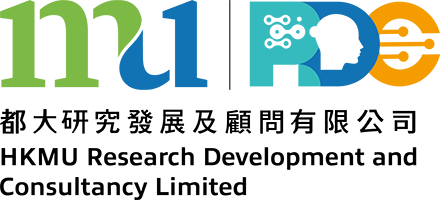Course Coordinator: Dr Dani Samer ASSI, BSc (TUL), MSc (UofG), PhD (UofG)
Course Developer: Jenny N Lim, Consultant
IT S234 is intended for a broad audience and is therefore suitable as a free-choice selection; however, the course is included in a number of programmes. The course builds on the basic Internet skills taught in IT S123 to equip you with the practical skills needed to design and manage websites for small-scale Web commerce and small organizations. In addition you will also become familiar with developing trends in website technology and how these are likely to influence website design.
Advisory prerequisite(s)
You are advised to have already studied IT S123. In particular you should be able to create basic webpages and publish these on the Web.
Aims
This course aims to:
- Provide students with the skills to:
- Identify and discuss the steps in the website design process;
- Use a software tool for developing websites;
- Describe the characteristics of good and bad website design; and critique the design qualities of websites;
- Discuss the establishment, together with the clients, of the founding requirements for a website — its scope, content and intended features;
- Demonstrate recommendations for legal, ethical and intellectual property considerations as a designer;
- Instruct students to design the interface, navigation and functionality of a website based on the project requirements and on basic design guidelines;
- Instruct students to develop, prepare and integrate the elements that make up webpages — text, graphics, multimedia, animation and interactive features;
- Help students to recognize the importance of testing throughout the various stages of Web development;
- Help students understand the security and performance considerations in serving websites on the Internet;
- Prepare students to promote and manage a small commercial website aimed at supporting business growth.
Contents
The course covers the following topics:
- 'Interactive elements' describes the programming language
- 'Preparing for Web design' presents the basic concepts for the course:
- 'Web design basics and process' introduces basic design guidelines used in building and evaluating websites, the common tools and technologies for constructing websites, and the website development process.
- 'E-commerce concepts' describes the design and implementation issues that apply to Web commerce sites.
- 'Analysis and planning' is the first stage of the website development process. This step is where the goals and scope of the project are defined and agreed upon, and site-wide architectural decisions are made. The output of this step will feed into the succeeding steps in the process.
- 'Design and production' focuses on the detailed design and production of the individual elements that make up a webpage and how they are all put together:
- 'Page layout' discusses the structuring and organization of content on a webpage and the use of storyboards and prototyping techniques in presenting the layout.
- 'Text and typography' looks at the design issues affecting the text content on a webpage. It introduces formatting techniques using both HTML and style sheets.
- 'Graphics and multimedia' deals with the production and appropriate use of graphics and multimedia elements.
- 'Going live' discusses the testing and on-going support and maintenance that must be performed after the site launch:
- 'Testing and deployment' discusses testing methods to ensure that the website performs according to the original project specifications. It describes the process of moving the site to a live production server.
- 'Promotion and maintenance' covers site promotion and operational issues to consider in managing an active business website effectively.
- The 'Future of Web design' takes a look at the emerging trends in Internet access and technology that can have a major influence on the field of Web design.
Learning support
There will be a number of tutorials and example classes offered during the course and using face-to-face and online formats.
Assessment
There are four assignments and a final examination. Students are required to submit assignments via the Online Learning Environment (OLE).
Online requirement
Use of the Online Learning Environment (OLE) is mandatory for the submission of assignments as well as access to the discussion board. A separate course website will be maintained to provide access to activities and case studies as well as updates to the material. Optional online support sessions will also be presented.
Equipment
Students will need access to a computer suitable for connecting to the Internet. The recommended minimum computing requirements are:
- Intel Core i3 or above
- Display card and monitor
- 4 GB RAM
- Internet access
- Mouse, keyboard, speakers and microphone
You will be provided with access to suitable storage space for webpages including CGI support.
Software
Students will need access to a computer with Microsoft Windows 7 or above, as well as the following packages.
- Internet browser (e.g., Microsoft edge)
- Webpage editor
- Image editor
- Text editor
- FTP client
You are strongly advised to read the Course Guide before choosing any packages to ensure that they meet the requirements for the course. The course material will refer to the packages Macromedia Dreamweaver and Fireworks, and access to these specific packages is strongly recommended.
Set book(s)
There are no set books for this course. Reference books will be recommended in study units.
Students with disabilities or special educational needs
The course involves a lot of keyboard and mouse work and therefore anyone with restricted manual movement should contact the Course Coordinator to discuss possible strategies. In addition, anyone with impaired vision should contact the Course Coordinator especially with regards to problems differentiating between colours.










